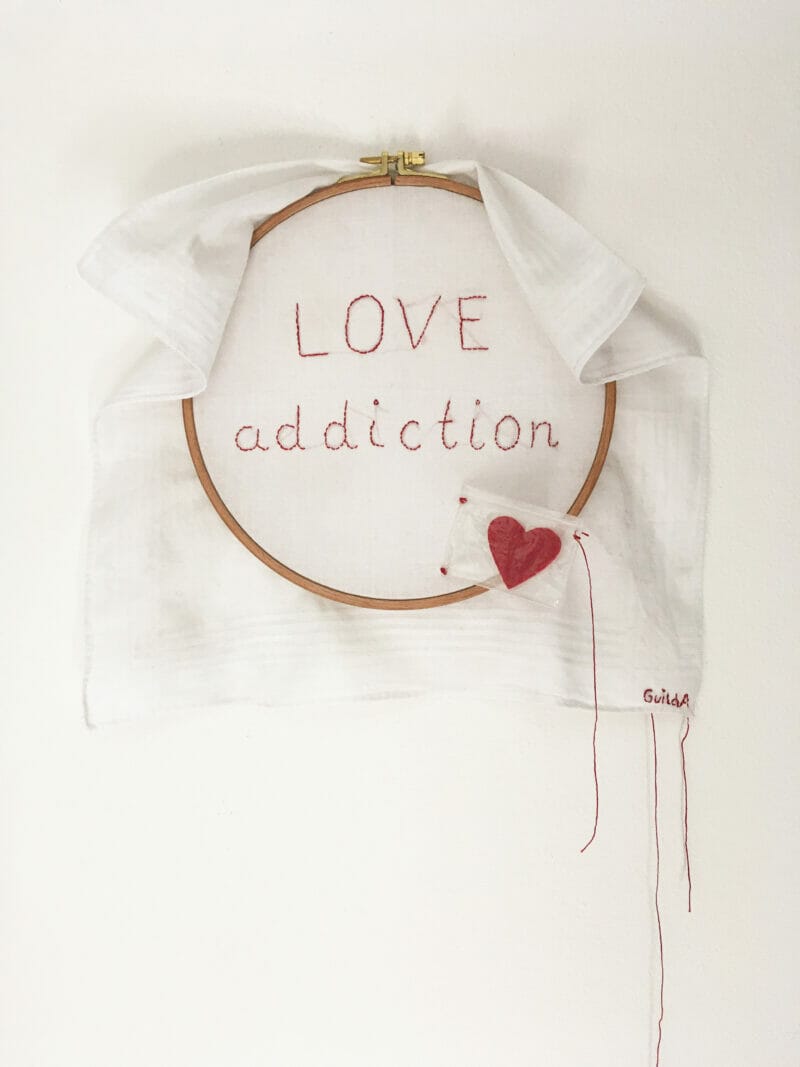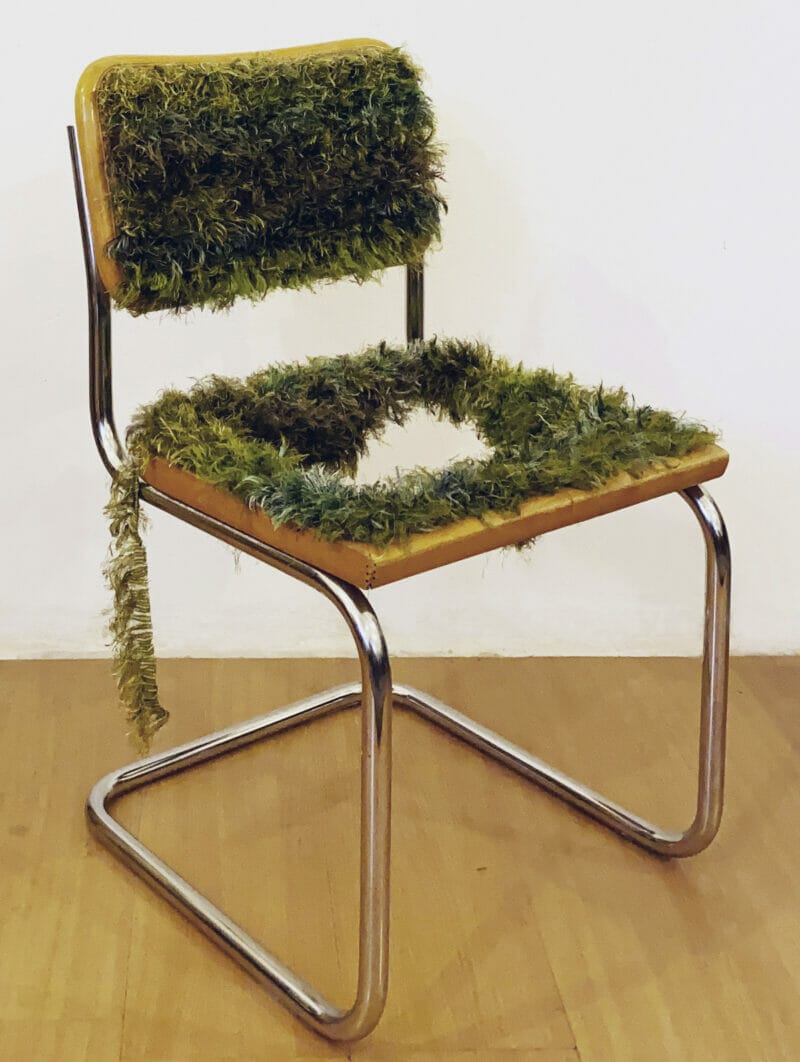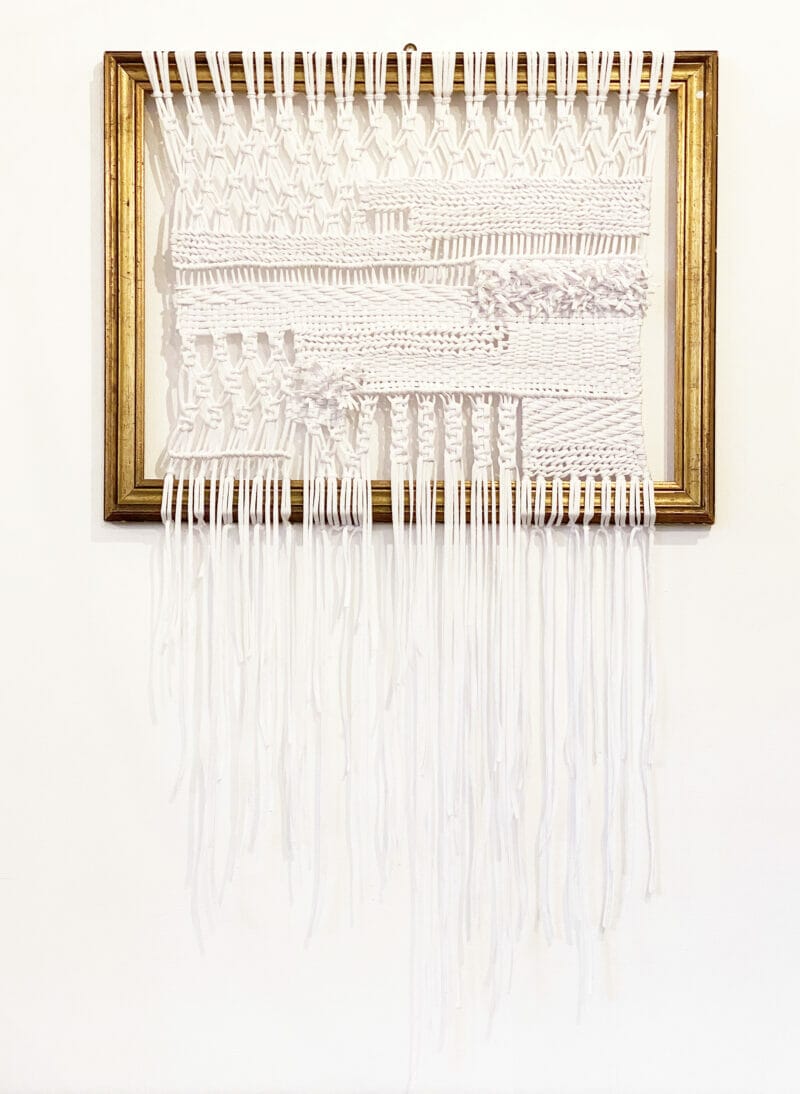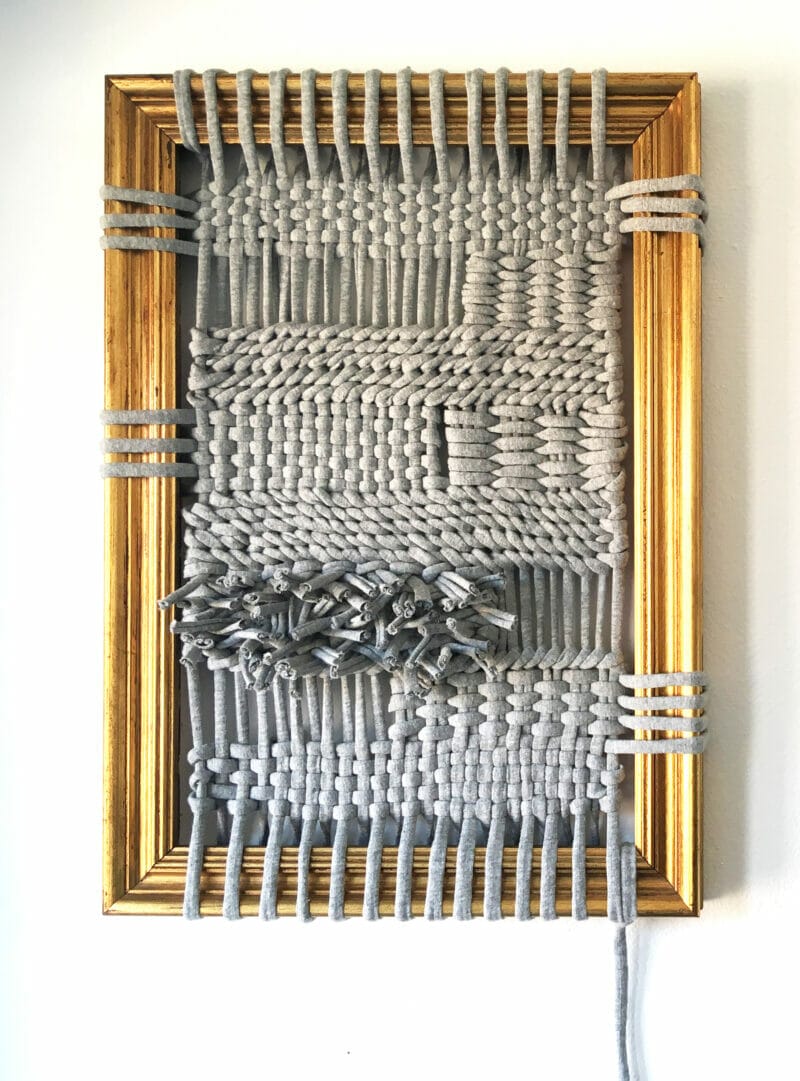Laura GuildA
*Featured photo: Webstuhl by Laura GuildA (2019) 72 x 42,5 x 49,5 cm
Laura Guilda Grote, aka Laura GuildA, graduated in Fashion & Textile design at NABA and later specialized in Decoration at the Brera Academy of Fine Arts. She is a polymateric textile artist who through her installations reflects on contemporary instances with particular reference to the environmental sphere and eco-sustainability. She currently lives and works in Milan.
Your background is connected partly to design and partly to fashion. What is your relationship with the latter?
As early as childhood, I began to dress myself with clothes found in the closet of my mother, who, being an actress, had a beautiful collection of distinctive costumes and dresses. I soon realized that I was going to study fashion. I loved shopping with my friends and experimenting and transforming my clothes. At the time, my idol was punk queen Vivienne Westwood, and in high school I used to dress inspired by her. Soon I began to design garments and so I learned to sew; my dream was to become a fashion designer. In Berlin, I got my first experience in the industry by doing an internship in the fashion company Evelin Brandt, and in this context every year I got to visit fashion fairs and attend fashion shows. After high school, during my time as an au pair in Barcelona, I enrolled in a training course at a fashion school. Afterwards, I studied for a year at a technical school in Lugano before moving to Milan-the city of fashion par excellence-where I then pursued all my subsequent studies.
Your artistic and educational background has developed in different cities: Barcelona, Lugano, Milan, Venice to name a few. How have these cities influenced your work?
Each city has given me new inspirations. In the case of the lagoon city of Venice, where I took a course on “curatorial practices in fashion” with Maria Luisa Frisa, I was carried away by the slow pace of living in a city that is smaller and less hectic than Milan. Being a particular city where everything is done on foot or by water, I was inspired by my walks along the canals and consequently, by the colors of water and seaweed ranging from different kinds of blue to green. The perception of light and colors seems to be different in Venice, everything is brighter and shimmering, and I think I also elaborated these aspects in my works that I created there.
In general, the cities where I have lived have influenced my mood and ideas. Also, the experiences I have had and encounters with local people and materials are part of the development of my work.
Your works are mainly polymateric installations in which both salvaged objects and textile materials are present. What characteristics must a material have to become part of your work?
The materials I use indeed are very different from each other and it is difficult to establish a common characteristic. I love wood and the other materials I use are “old,” they tell a story. Some consist of natural or recycled fibers, I am attracted by their color or shape. Lately I have been thinking a lot about the messages I want to communicate with my works, so the material they are made of is also very important, let’s say it is an integral part. I don’t rule out the possibility that soon I might do away with artificial materials altogether and try to create works with only plant materials.
Which fiber do you prefer to use and why?
For now it is cotton, I also love silk and linen very much. I use cotton because it is durable but at the same time soft and easy to work with. I also choose it because it is natural, recyclable and biodegradable but I also know that its cultivation is problematic because of the use of pesticides and because it requires huge amounts of water.
Within your artistic research there is a recurring use of the chair as a support on which to re-intervene. The chair becomes a kind of ready-made as in the case of “No Rest.” What led you to make this choice?
The chair is the object most revisited by industrial designers. Every great designer has experimented to create their own, which is no easy feat because the chair has to be comfortable, unique and recognizable at the same time. At the Brera Academy of Fine Arts, I graduated with a thesis entitled “ModArte – fashion in art” in which I analyzed artists who had been involved with fashion and design. I analyzed several case studies that helped me understand that there are so many hybrid forms in which the boundaries between fine and applied arts vanish: it becomes difficult to identify creators only as artists or only as designers. I myself feel I am part designer part artist, for my graduation I created the installation “sit and reflect’ which consists of three chairs on which I intervened with weaving works: “Webstuhl,” “Lost childhood” and “High consumption.” After this series, I made the works “No rest” and “Emergency,” and I also designed other as-yet-unrealized chairs because I like this paradox: my chairs, from design objects, become chairs on which it is impossible to sit, becoming artworks that would like to motivate the viewer to think about contemporary instances such as social, environmental and political ones.
One theme that is so dear to you is Greek mythology. What gave rise to this interest and in what works has it been treated?
My research on Greek mythology originated during the pandemic and specifically during the planning for the exhibition “Waiting at a Thread” at Laboratorio VI.P in October 2020. In this context, I exhibited the work-in-progress piece “Penelope,” which consists of a golden frame on which weavings were created with a white cotton rope and then macramé knots were made and unmade in front of the audience. It is a work dear to me that led me to identify with the figure Penelope from the Odyssey myth. She was waiting for the end of the Trojan War and the return of Odysseus, I was waiting for the end of the lockdown and the reopening of our exhibition. Subsequently, I continued to develop the concept of Penelope’s love in comparison to Odysseus, of the perfect and faithful wife who waits for twenty years for the return of her hero as a kind of waiting and unconditional love that seems to never end and is difficult to make sense of. I then created the works “Odysseus,” “Telemachus,” and “Calypso,” which are all monochrome framed works made with the weaving technique.
What are you working on now and what are your plans for the future?
Following the themes of the series just mentioned related to the Odyssey myth, I am still pursuing my research on love or affectivity, this time I am investigating them in a more psychological way: for example, I deal with love experienced during childhood and various pathological states such as affective addiction. I am creating a series of works with the embroidery technique of which my new work “my hero” inspired by the concepts of ‘infatuation and physical and psychological attraction to another person is a part.
Lately, due to personal work reasons and thus lack of time, I am suffering a lot because I cannot devote myself to my artistic pursuit as much as I would like. I have been working for years as a painter’s assistant and on weekends I work at the university.
So in the future I would like to devote more time to my projects. Also, I would love to participate in an art residency to immerse myself and focus 100% on my work in a large space to create new and larger works.







